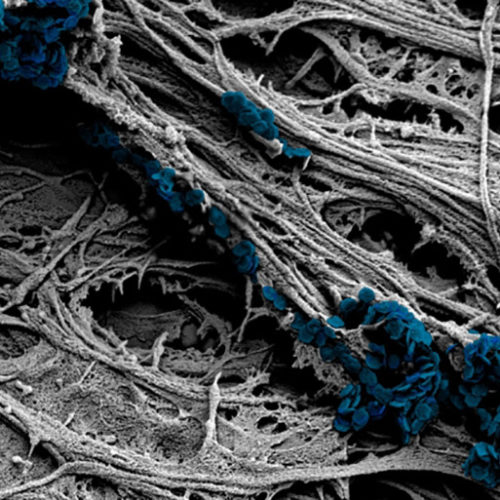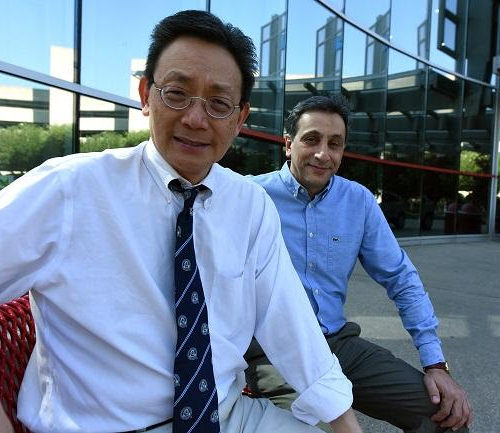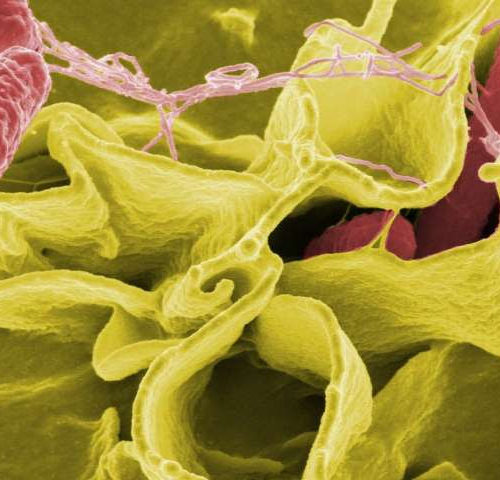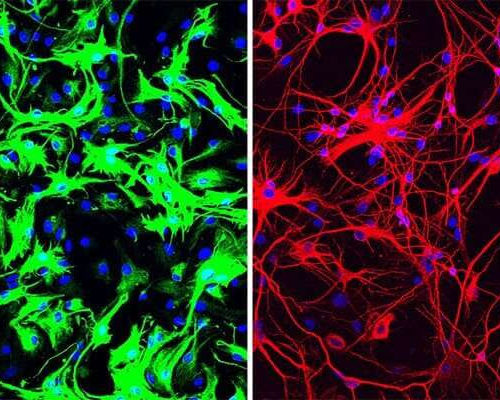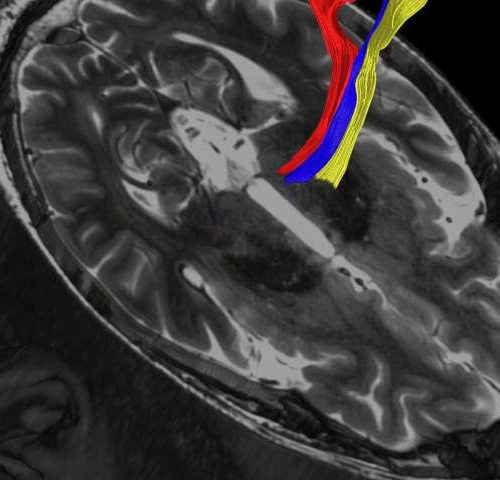Electrical stimulation and chemical pharmaceuticals are the two ways that doctors and scientists routinely use to manipulate neural cells. Chemicals have their side effects, are slow to take effect, and are usually systemically delivered, while electrical stimulation usually requires invasive wires, is limited in its resolution, and is nearly impossible to administer within certain parts...
Tag: <span>Parkinson’s disease</span>
Study reveals intricate details about Huntington’s disease protein
by Charlotte Hsu, University at Buffalo Colored lines show the paths of crawling fruit fly larvae. Larvae with a mutant form of the human huntingtin protein that causes Huntington’s disease crawled poorly (center) compared with normal larvae (left). But when larvae carrying the Huntington’s disease protein also produced extra quantities of the Rab4 protein, crawling...
CBD may help avert lung destruction in COVID-19
MEDICAL COLLEGE OF GEORGIA AT AUGUSTA UNIVERSITY DRS. JACK YU AND BABAK BABAN view more CREDIT: PHIL JONES, SENIOR PHOTOGRAPHER, AUGUSTA UNIVERSITY Cannabidiol, or CBD, may help reduce the cytokine storm and excessive lung inflammation that is killing many patients with COVID-19, researchers say. While more work, including clinical trials to determine optimal dosage and...
Reactive arthritis is fueled by amyloid protein during salmonella infection
by Temple University Like the infrastructure of an apartment building, a fibrous protein known as curli amyloid that is produced by bacteria provides the supportive framework for biofilms—thick extracellular substances made by bacteria that enable multiple bacterial cells to assemble, survive, and thrive together. Curli amyloid, however, is also a key factor in diarrheal illness...
X-ray scattering shines light on protein folding
Multiple forms of a non-functional, unfolded protein follow different pathways and timelines to reach its folded, functional state, a study reveals THE KOREA ADVANCED INSTITUTE OF SCIENCE AND TECHNOLOGY (KAIST) THE SCIENTISTS FOUND THAT NON-FUNCTIONAL UNFOLDED FORMS OF THE PROTEIN CYTOCHROME C FOLLOW DIFFERENT PATHWAYS AND TIMELINES TO REACH A STABLE FUNCTIONAL FOLDED STATE. view...
Pilot study suggests Parkinson’s disease progression can be slowed
by Vanderbilt University Medical Center Deep Brain Stimulation (DBS) implanted in early stage Parkinson’s disease decreases the risk of disease progression and the need to prescribe multiple drugs to patients simultaneously, according to a five-year outcomes study of 30 patients released in the July 2020, issue of Neurology, the medical journal of the American Academy...
One-time treatment generates new neurons, eliminates Parkinson’s disease in mice
by University of California – San Diego Xiang-Dong Fu, Ph.D., has never been more excited about something in his entire career. He has long studied the basic biology of RNA, a genetic cousin of DNA, and the proteins that bind it. But a single discovery has launched Fu into a completely new field: neuroscience. For...
Disrupted circadian rhythms linked to later Parkinson’s diagnoses
Researchers probe brain’s 24-hour biological clock for neurodegenerative risks UNIVERSITY OF CALIFORNIA – SAN FRANCISCO Older men who have a weak or irregular circadian rhythm guiding their daily cycles of rest and activity are more likely to later develop Parkinson’s disease, according to a new study by scientists at the UC San Francisco Weill Institute...
Advanced MRI scans may improve treatment of tremor, Parkinson’s disease
by UT Southwestern Medical Center Diffusion tractography uses the movement of water molecules to identify tracts that connect different parts of the brain. It can be used to pinpoint the part of the thalamus to treat with focused ultrasound. Credit: UT Southwestern Medical Center Recently developed MRI techniques used to more precisely target a small...
Antioxidant agent may prevent chronic kidney disease and Parkinson’s disease
Oxidative stress is the result of reactive oxygen species (ROS) generation, and can be damaging to cells and tissues. In a new study, researchers from Osaka University developed a novel dietary silicon (Si)-based antioxidant agent that suppressed the development and progression of kidney failure and Parkinson’s disease in rodents. ROS are generated as a result...

